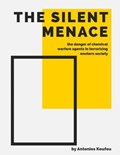Chemical warfare agents (CWAs) represent a silent yet devastating threat in the arsenal of modern terrorism. This book explores their historical use, modern implications, and the specific vulnerabilities they pose to Western societies. From the battlefield of World War I to the streets of Tokyo in 1995, CWAs have evolved from military tools to weapons of terror, exploiting fear and chaos to devastating effect.
In Chapter 1, the book delves into the science of CWAs, their classification, and historical deployment, illustrating their deadly potential and appeal to non-state actors. Chapter 2 shifts focus to Western societies, highlighting urban density, critical infrastructure, and societal openness as key vulnerabilities. The psychological and economic impact of CWA terrorism is examined, emphasizing the long-term scars such attacks can leave. Finally, Chapter 3 outlines countermeasures, from international treaties and regulatory frameworks to technological innovations and public awareness campaigns.
"The Silent Menace" serves as both a warning and a call to action, urging policymakers, researchers, and the public to confront the escalating risks of chemical terrorism. It provides a roadmap for prevention, preparedness, and resilience, ensuring societies are better equipped to counter this invisible yet insidious threat.

